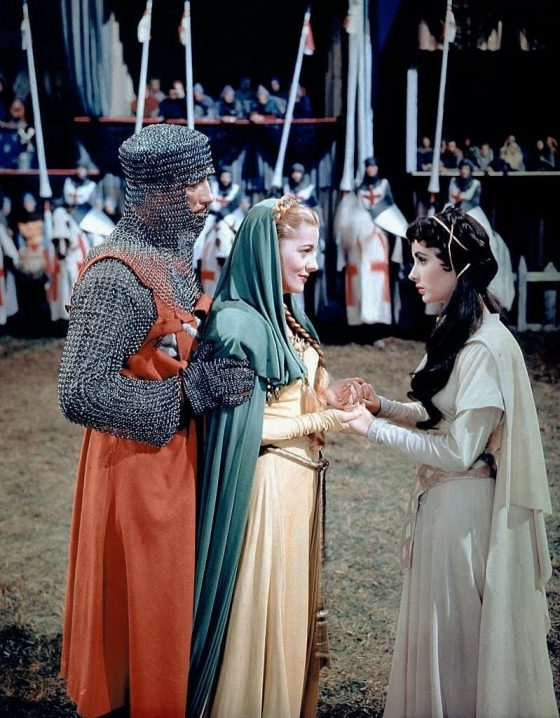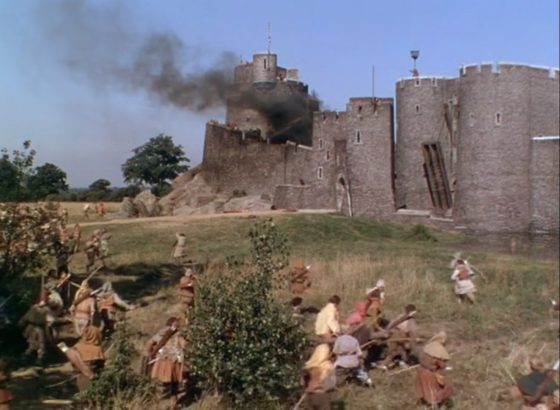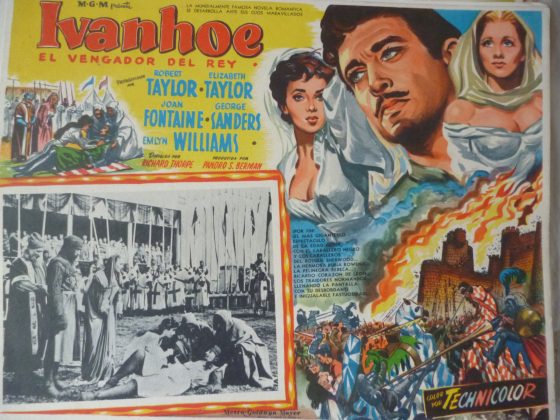News of this at Christmas 2021 because only a few days ago, there was a new ‘Blu-ray’ release for this film
MGM’s sumptuous big screen adaptation of Sir Walter Scott’s IVANHOE (1952) was released a few days ago on Blu-ray from the Warner Archive Collection!
It has had a spectacular 4K restoration of the original three-strip Technicolor negatives, so we will view it in all its Technicolor glory – and in colour terms, this will be good as you would ever get.
What a colour process Technicolor was !! It fits this film perfectly

BELOW – These colour action shots below are impressive filmed at Elstree Film Studios with Torquilstone Castle built in the grounds



Robert Taylor had a very successful run in Britain in the early fifties with Ivanhoe – a big hit at the Box Office – then ‘Knights of the Round Table’ and later ‘The Adventure of Quentin Durward’
All pretty good – he doesn’t seem to be the ideal actor for these roles but looking back he was just that – an unlikely choice but a successful one. Also just before ‘Ivanhoe’ he scored another big hit in ‘Quo Vadis’
Studio Castle “Ivanhoe Will Be Shot At Elstree
The filming by Metro-Goldwyn-Mayer of Scott’s Ivanhoe started at Elstree Studios, near London, at the end of June 1951. However the cameras will not go anywhere near Conisbrough Castle around which the opening chapters of Sir Walter Scott’s novel were woven. An imposing “castle” has been constructed on the sets at the London studios under the direction of Alfred Junger – the art director on the film.
We can see the finished castle in the stills above and it certainly looked very impressive
Use of Local Locations – local to Elstree that is
In a phone call at the time to Mr Paul Mills, Publicity Director, referred enthusiastically to the careful work on the castle scenes. The studio “castle” has been built for some time, and Mr Junger has been guided by the architecture of Torquilstone Castle, which also has a place in “Ivanhoe.”
Mr. Mills confirmed that there would be no location work at Conisbrough. “If there are any locations they will be done locally,” he said, and added that although Scott gave place-names it was only assumed that action took place where it did.
An enormous cast was assembled— in the region of 700 – and at the time the claim was that ‘all will be British’.
The Technicolor film was one of the major British film productions of 1952, and would rank among the most spectacular of post-war releases. Producing the film was Pandro S. Berman, with Richard Thorpe as director.
Place your comment